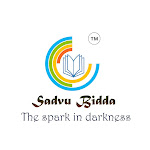
Note: Deleted topics are mentioned red in colour for easy understanding. 👉👉CLICK HERE TO DOWNLOAD PDF SUBJECT:
ZOOLOGY
Zoology-I: Intermediate First Year
UNIT-I:
ZOOLOGY - Diversity of Living World:
What is life?; Nature, Scope & meaning of
zoology; Branches of Zoology; Need for classification- Zoos as tools for study
of...






















